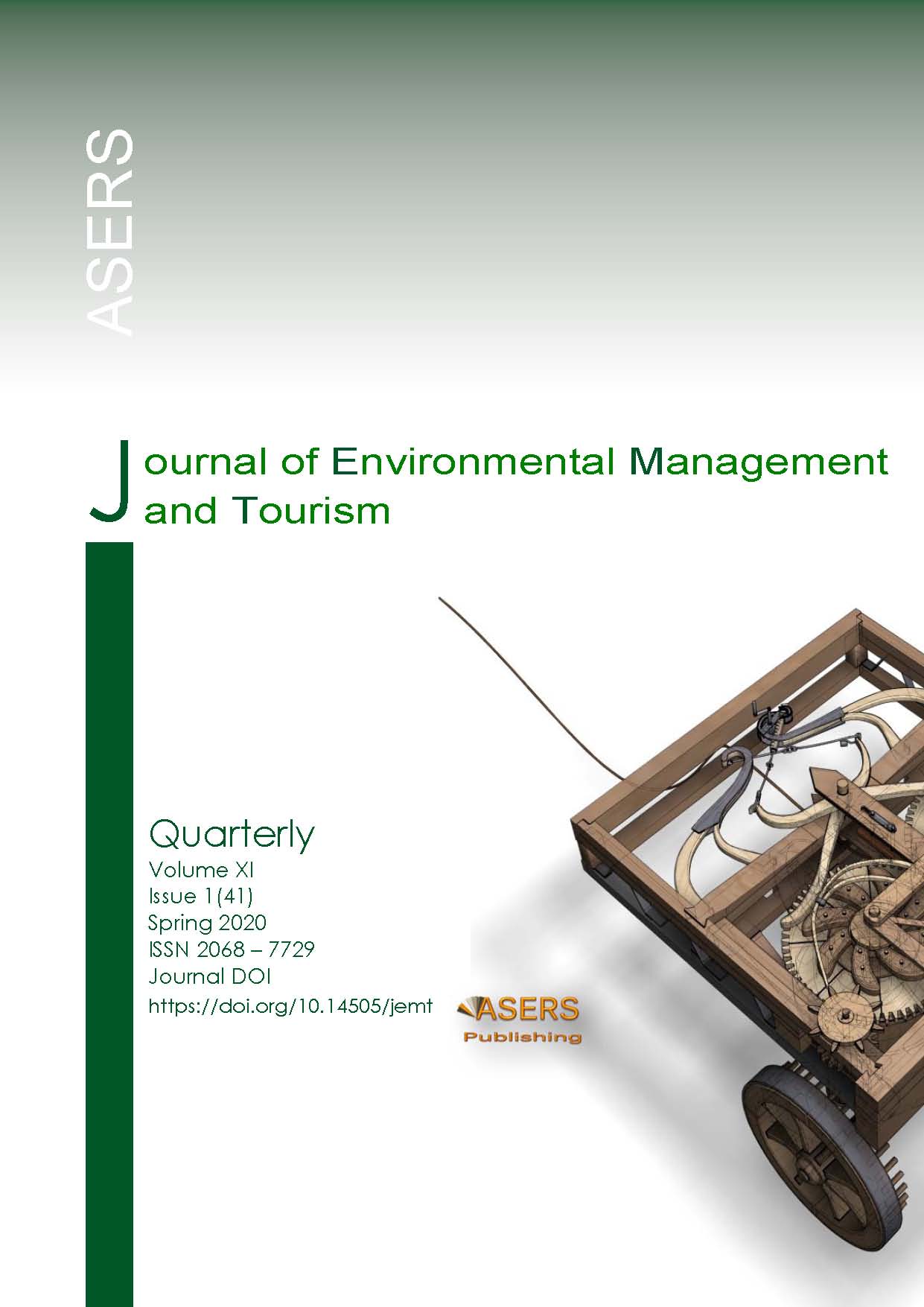The Process of Innovation Diffusion and Adoption of Innovations in the Implementation of Community-Based Total Sanitation Policy in South Sumatera
Abstract
The Ministry of Health of the Republic of Indonesia established policy number 13 of 2014 concerning Community-Based Total Sanitation (STBM) which aims to change people's behaviour in hygienic behaviour in sanitation development. Changes in community behaviour are very important, because of the increased vulnerability of people affected by diarrheal diseases, especially in the Pemulutan region, Ogan Ilir Regency, South Sumatra Province. The STBM policy can be achieved through policy diffusion which is influenced by factors of innovation and adoption by the community.
The study tried to describe the implementation of STBM policies. The study used a qualitative approach, supported by primary and secondary data obtained through in-depth interviews and observation techniques. The results showed that the process of innovation and adoption of the STBM implementation policy in the Pemulutan region had not yet run optimally, although the community realized that the policy was very beneficial to improve the quality of life of sanitation environment. Various obstacles still occur including the content and policy context factors that are understood by the community, integrated service post (posyandu) cadres, and midwives as technical implementers in implementing policies.
References
[2] Baybeck, B., Berry, W. D., and Siegel, D. A. 2011. A Strategic Theory of Policy Diffusion via Intergovernmental Competition. The Journal of Politics, 73(1): 232-247. DOI:https://doi.org/10.1017/S0022381610000988
[3] Boushey, G. 2010. Policy Diffusion Dynamics in America. New York, NY: Cambridge University Press.
[4] Braun, D., and Gilardi, F. 2006. Taking ‘Galton’s Problem Seriously: Towards Theory of Policy Diffusion. Journal of Theoretical Politics, 18(3): 298-322. DOI:https://doi.org/10.1177/0951629806064351
[5] Clark, C., Menifield, C. E., and Stewart, L. M. 2017. Policy Diffusion and Performance-based Budgeting. International Journal of Public Administration, p. 1-7. DOI:https://doi.org/10.1080/01900692.2016.1278384
[6] Fay, D. L., and Wenger, J. B. 2015. The Political Structure of Policy Diffusion. The Policy Studies Journal, 44(3): 349-365. DOI:https://doi.org/10.1111/psj.12122
[7] Gilardi, F. 2016. Four Ways We Can Improve Policy Diffusion Research. State Politics & Policy Quarterly, 16(1): 8-21. DOI: https://doi.org/10.1177/1532440015608761
[8] Gray, V. 1973. Innovation in the States: A Diffusion Study. American Political Science Review, 67(4): 1174-1185.
[9] Howlett, M., and Rayner, J. 2008. Third Generation Policy Diffusion Studies and the Analysis of Policy Mixes: Two Steps Forward and One Step Back? Journal of Comparative Policy Analysis: Research and Practice, 10(4): 385-402. DOI:https://doi.org/10.1080/13876980802468816
[10] Jordan, A., and Huitema, D. 2014. Policy Innovation in a Changing Climate: Sources, Pattern, and Effect. Global Environment Change, 29: 387-394. DOI: https://doi.org/10.1016/j.gloenvcha.2014.09.005
[11] Kim, D. R. 2013. Local Government Policy Diffusion in a Decentralized System: Childbirth Support Policy in South Korea. Local Government Studies, 39(4). DOI:https://doi.org/10.1080/03003930.2012.72 6200
[12] Krenjova, J., and Raudla, R. 2017. Policy Diffusion at the Local Level: Participatory Budgeting in Estonia. Urban Affairs Review, 54(2): 1-29. DOI:https://doi.org/10.1177/1078087416688961
[13] Maggetti, M., and Gilardi, F. 2015. Problems (and Solutions) in the Measurement of Policy Diffusion Mechanisms. Journal of Public Policy, 37(1): 87-107. DOI: https://doi.org/10.1017/S0143814X1400035X
[14] Marsh, D., and Sharman, J. 2009. Policy Diffusion and Policy Transfer. Policy Studies, 30(3): 269-288. DOI:https://doi.org/10.1080/01442870902863851
[15] McNabb. 2002. Research Methods in Public Administration and Nonprofit Management, Quantitative and Qualitative Approach. New York: M.E. Sharpe Inc., 80 Business Park Drive Armonk.
[16] Meseguer, C., and Gilardi, F. 2009. What is New in the Study of Policy Diffusion? Review of International Political Economy, 16(3): 527-543. DOI:https://doi.org/10.1080/09692290802409236
[17] Nicholson-Crotty, S., and Carley, S. 2016. Effectiveness, Implementation, and Policy Diffusion: Or “Can We Make That Work for Us?” State Politics & Policy Quarterly, 16(1): 78-97. DOI:https://doi.org/10.1177/1532440015588764
[18] Qudsy, Syaifuddin Z. (Ed.). 2014. Penelitian Kualitatif & Desain Riset: Memilih diantara Lima Pendekatan, Edisi Ke-3. Yogyakarta: Pustaka Pelajar
[19] Regulation of the Minister of Health of the Republic of Indonesia Number 3 of 2014 concerning Community-Based Total Sanitation
[20] Rogers, E. M. 1983. Diffusion of Innovations (3rd ed.). New York: The Free Press.
[21] Shipan, C. R., and Volden, C. 2012. Policy Diffusion: Seven Lessons for Scholars and Practitioners. Public Administration Review, 72(6): 788-796. DOI:https://doi.org/10.111/j.1540-6210.2012.02610.x
[22] Sugiyama, N. B. 2008. Ideology and Networks: The Politics of Social Policy Diffusion in Brazil. Latin American Research Review, 43(3): 82- 108.
[23] Suwitri, S. 2011. Policy network in the formulation of Public Policy: A Study of the Policy Formulation for Flood and Rob Management in Semarang City Government. Semarang: Petraya Percetakan, Diponegoro University Publisher Agency
[24] Volden, C. 2016. Failures: Diffusion, Learning, and Policy Abandonment. State Politics & Policy Quarterly, 16(1): 44-77. DOI:https://doi.org/10.1177/1532440015588910
[25] Volden, C., Ting, M. M., and Carpenter, D. P. 2008. A Formal Model of Learning and Policy Diffusion. The American Political Science Review, 102(3): 319-332.
[26] Walker, J. L. 1969. The Diffusion of Innovation in the American States. The American Political Science Review, 63(3): 880-899.
[27] WHO & UNICEF Joint Monitoring Program for Water Supply and Sanitation. 2015. Progress on Sanitation and Drinking-Water: 2014 Update. Geneva: WHO Press.
Copyright© 2025 The Author(s). Published by ASERS Publishing 2025. This is an open access article distributed under the terms of CC-BY 4.0 license.
